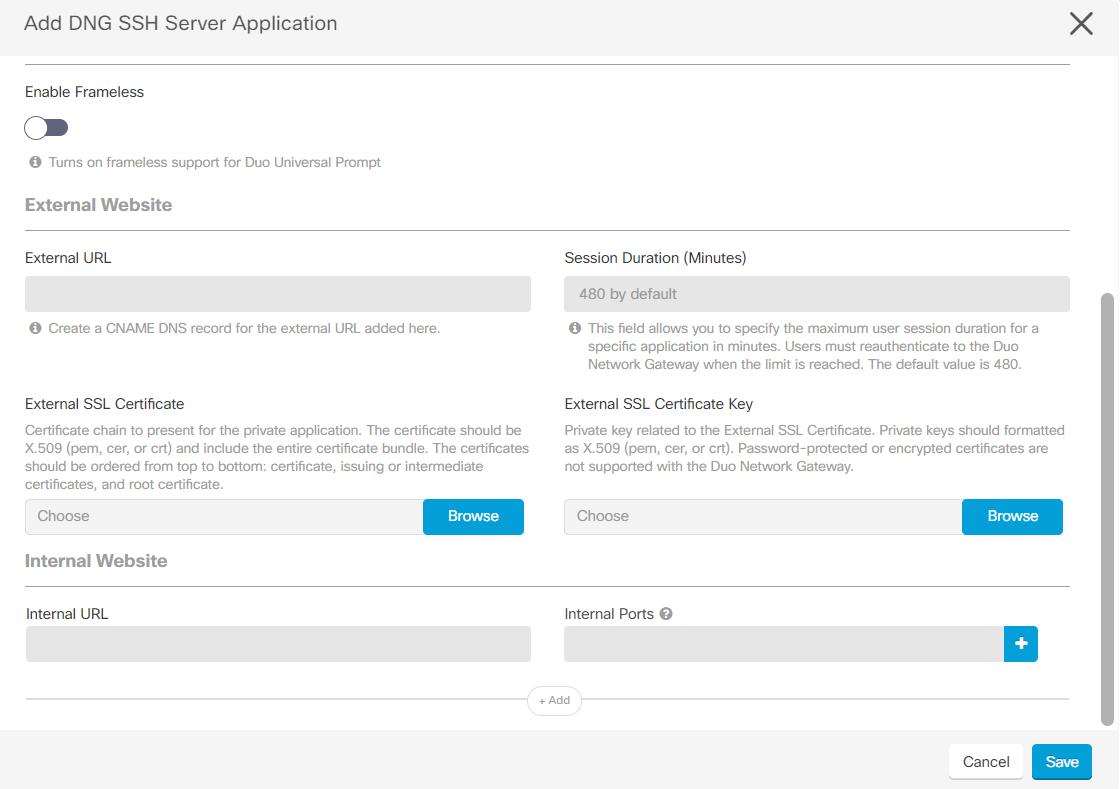Add a Protected SSH Server Application
This section describes steps for adding protected SSH applications to a DNG deployed within Secure Firewall Cloud Native.
Before you begin
-
Identify the SSH application you'd like to protect with Duo Network Gateway.
-
Obtain an SSL certificate for your application from a commercial certificate authority (CA) using the fully qualified external DNS name of your application as the common name (e.g. yourinternalapp.example.com). This secures the connection between your external users and the Duo Network Gateway server.
-
If the application you'll be protecting is communicating over HTTPS you will also need to obtain the Base64-encoded X.509 (pem, cer, or crt) formatted version of the application's certificate bundle including the issuing certificates and the root certificate. You may also use a wildcard SSL certificate.
-
Ensure that a minimum of one Duo Admin Panel is onboarded into your CDO tenant.
Procedure
| Step 1 | In the CDO navigation bar, choose . Alternatively, you can select an SFCN DNG device and in the Management pane on the left, click Protected SSH Servers.
| ||
| Step 2 | Click the SSH Server Applications tab, click + to add a SSH application.
The Add Protected Web Application screen provides normal and advanced views. The simple view displays the minimum parameters required for creating a SSH server application, whereas the advanced view displays advanced fields for SSH server creation. You can move the Advanced View slider to the right to view the advanced fields required for application creation.
| ||
| Step 3 | In the normal view, you can configure the following fields:
| ||
| Step 4 | If you have enabled the advanced view, you can configure the following fields:
| ||
| Step 5 | You can add multiple application's URL by clicking Add. | ||
| Step 6 | If you want to create another SSH server application with the same values, click Create another. | ||
| Step 7 | Click Save. A new SSH server application is created. If you have opted to create another SSH server application, most of the common fields from the previous application are copied automatically to the next application created. | ||
| Step 8 | Deploy the changes you made to the region. See Deploy the Configuration Changes. |
 ) in the application row to create a new application from an existing one. When creating the application, you can modify the prepopulated fields.
) in the application row to create a new application from an existing one. When creating the application, you can modify the prepopulated fields. 